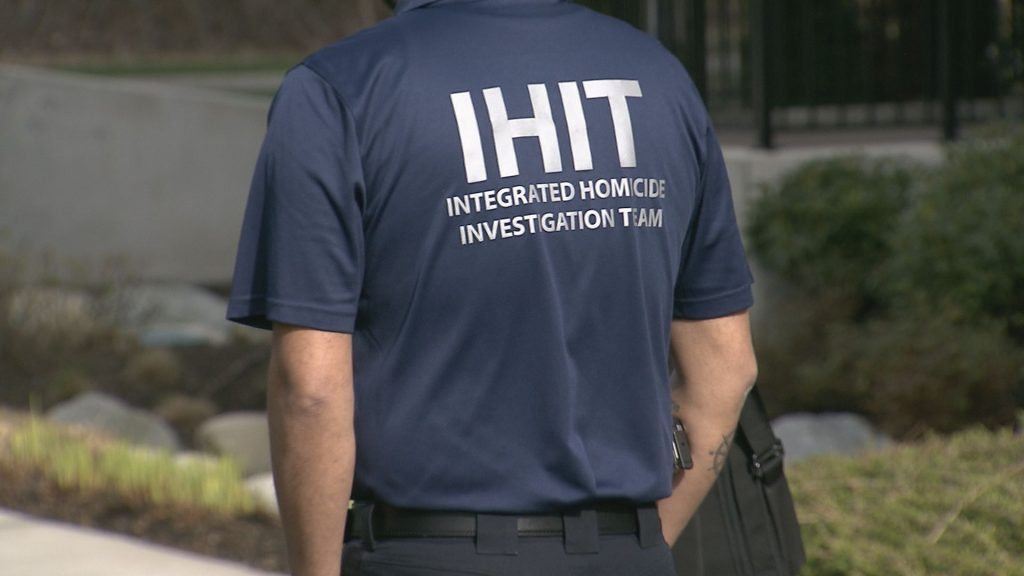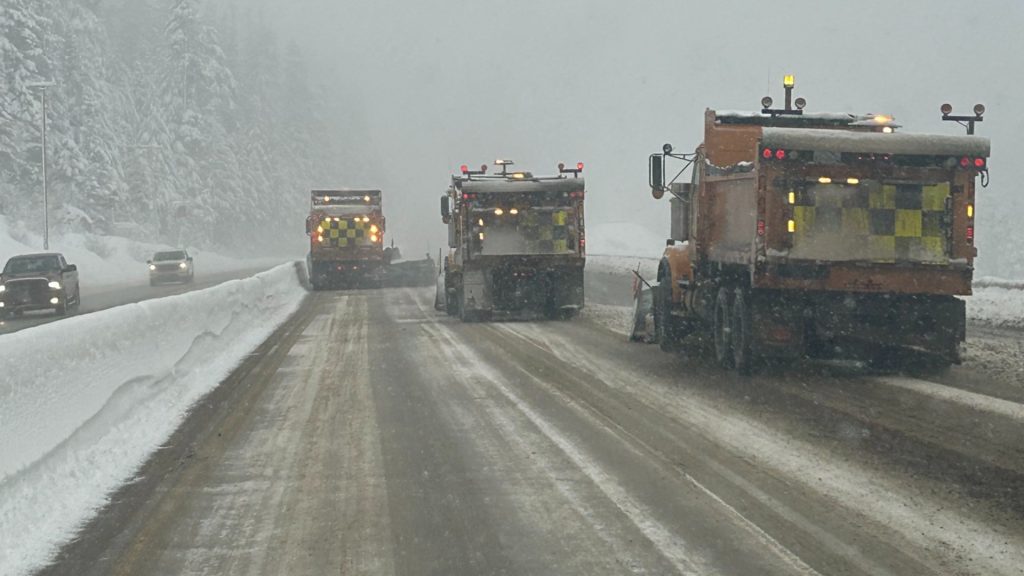B.C. storm disrupts supply chain, grocery store aisles go bare
Posted November 17, 2021 6:34 pm.
Last Updated November 17, 2021 6:35 pm.
Highway and railway closures caused by severe storms in B.C. earlier this week have led to empty shelves in grocery stores in the Fraser Valley and Interior, despite the province telling people not to hoard.
Photos on social media show a near barren meat aisle at a Save on Foods in Chilliwack, while a Walmart in Kamloops is out of milk and doesn’t know when it will be restocked.
RELATED: Shoppers empty shelves in Fraser Valley grocery stores
Supply chain expert Sylvain Charlebois with Agri-Food Analytics Lab says while he’s not worried about shelves staying completely bare for long, there are a few food items that might be in short supply because of the floods.
“They’ll adapt, and they’ll probably ration people. They’ll ask people to buy fewer items, which is normal. That will be okay for a while but I’d say probably in a few weeks from now or starting in December — you may see shortages of dairy products, of poultry and eggs,” he explains. “These are supply-managed commodities and quotas are set for BC. So if you’re not producing any of this, there’s nothing coming in. And tariffs on imports are super high. So you’re basically, you can’t import anything. So that’s going to be a problem.”
Related Articles:
-
B.C. declares state of emergency due to floods
-
Supply chains cut off by B.C. floods could impact Canadians at grocery stores
-
Shoppers empty shelves in Fraser Valley grocery stores
Save on Foods is encouraging people to maintain their normal shopping habits, while saying it is using alternate routes in an effort to keep supply up.
On Wednesday, Premier John Horgan announced that a state of emergency has been declared. During the news conference, he urged people not to panic buy, and added that he is confident the province can restore B.C.’s supply chains “in a quick and orderly manner” so long as people do not hoard.
Public Safety Minister Mike Farnworth said the declaration could include emergency powers for dealing with hoarding and price-gouging of goods.
“Our transportation infrastructure is crippled,” Farnworth said, while discouraging travel and urging calm. “Getting our roadways and railways back up and in operation is our number one priority. We fully recognize how important it is to reopen road connections from the Lower Mainland to the Interior to get those supply chains moving.”
Because highways and railways have been severely impacted, the president of the B.C. Chamber of Commerce says this will have a lasting impact on the province’s economy.
“We need to move from response to recovery very quickly,” she said. “We cannot be complacent. We need our trade corridors to be reopened and the movement of people, goods and services to be re-established as soon as possible,’ Fiona Famulak tells CityNews.
All major highways between B.C.’s Lower Mainland and the Interior were severed, some in several locations, when record rainfall washed away bridges and roads over a 24-hour period starting Sunday.
Famulak said industries across the supply chain will be affected and is calling on all levels of government to act with urgency to allocate the resources needed to replace the lost infrastructure.
“The essentials ARE coming.” Dave Earle w/the @BCTruckingAssoc says they’ve been in constant contact w/the province & border services to ensure essential goods keep moving to people throughout B.C. More on this story to come on our website. @CityNewsVAN https://t.co/9qkQp9qzfu pic.twitter.com/KXaC9MaFds
— Ria Renouf (@riarenouf) November 18, 2021
Dave Earle with the BC Trucking Association told CityNews they’ve been in constant touch with the federal and provincial governments and all the regulatory agencies. And says the core takeaway is that “essential goods are coming.”
“There’s been a delay, there’s been a disruption, there’s lots of vehicles that are all out of position — and we have to reset and reconfigure,” he said, but added, “It’s coming together.
“A lot of the supply chain intricacies are based on efficiency and full loads and now we have to redesign everything. That’s a challenge but it’s also an opportunity. It’s a challenge for us to do, it’s an opportunity for us to find new ways and new routes, new synergies that didn’t really exist before so we can move things going both directions.
“It’s going to be bumpy. There’s no doubt. But certainly, in terms of what we’re looking at, as we move into the holiday season, I mean, our focus is making sure that people are safe, and then have the goods that they need. And we’re going to make sure that happens.”
Despite the impacts to rail and trucking movement, marine terminals at the Port of Vancouver are still operating.
However, in an email statement from the Vancouver Port, “The Vancouver gateway is experiencing significantly disrupted rail and truck movement.”
“CN and CP main rail corridors are not currently operational between Vancouver and Kamloops due to washouts and landslides. Both CN and CP crews are clearing debris and conducting repairs at multiple sites with progress being made in restoring some impacted rail sections,” the statement reads.
The port was not able to provide a timeline for fully restored rail operations to the west coast.
“Flooding impacts on highways remain severe and widespread throughout southwestern B.C. All main highway routes to the Metro Vancouver area are closed. Resumption of traffic is expected to take two to three days. Damage assessments of roadway infrastructure are ongoing.”
David Gillen, the director for the centre for transportation studies at the University of British Columbia, estimates it will take about two weeks for repairs to allow normal traffic flow to resume, but it will be months for a complete recovery because road work is limited during winter months.
“It’s going to take some time until these routes are repaired enough for trucks to travel but there is some degree of substitutability that there isn’t with railroads because you basically have two main lines and they’re both severely hampered. They have to be rebuilt,” Gillen said.










